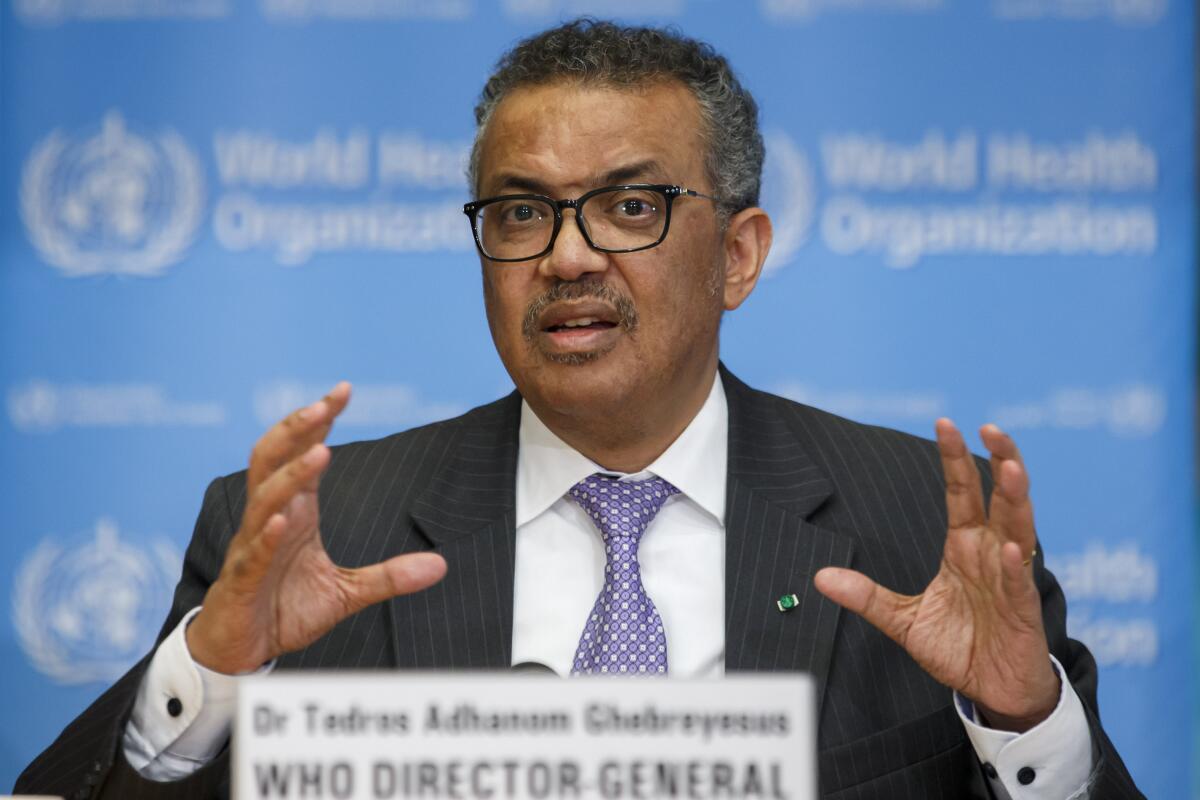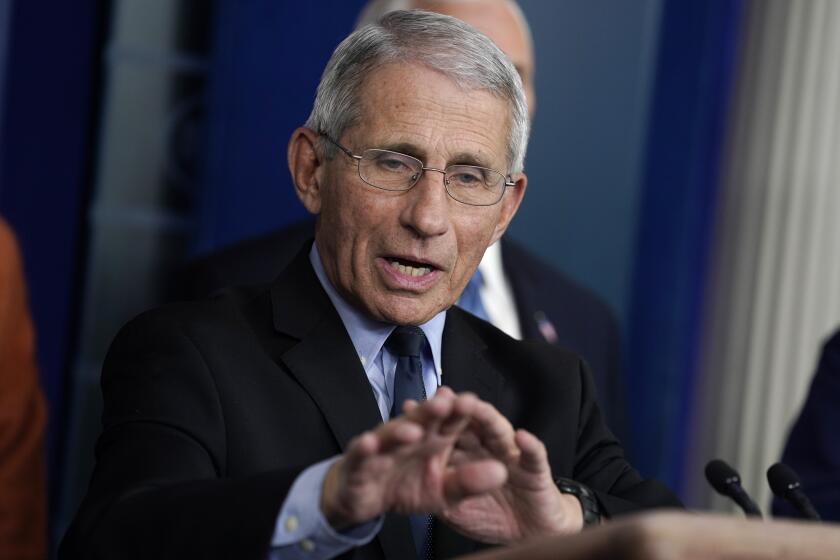For our coronavirus future, we look to Europe, which is warily easing some restrictions

- Share via
Spain began easing parts of its coronavirus lockdown Monday, and other Western European countries such as Italy and Austria appeared poised to follow suit with fewer restrictions on public activities.
But will the easing of constraints, however limited, prove to be a beacon of hope or a cautionary tale?
To onlookers in the United States, where many people are staying at home to help curb the spread of the virus, events in hard-hit European nations have been like dispatches from the future. Before COVID-19 fully established itself in hot spots such as New York, it devastated vulnerable Spanish nursing homes, filled the obituary pages of Italian provincial newspapers, and unnerved French villagers with a wave of urban refugees.
Now, the death rate across much of Western Europe apparently is beginning to level off. With President Trump musing about at least a partial reopening of the U.S. economy in May, these European countries — often grouped with the United States as advanced democracies with modern medical systems — might by then be experiencing a glimmer of normality, or showing signs of a new cycle of infection, illness and death.
Within Europe, as in the U.S., governments are wrestling with the same decisions, with varying local circumstances. How best to protect essential workers. How to balance considerations of public health and economic harm. How to shield the elderly and other vulnerable individuals, while allowing those who are healthy to venture out.
As health officials constantly admonish, actions taken a few weeks ago have a crucial bearing on what will happen today or tomorrow. And that will in turn affect the epidemiological picture weeks from now.
After the coronavirus pandemic cools down, how will California start getting back to normal? Slowly, methodically and in stages.
“We think it is going to be a virus that stalks the human race for quite a long time to come, until we can all have a vaccine that will protect us,” World Health Organization special envoy David Nabarro said in a weekend interview on NBC. And the United Nations agency believes “there will be small outbreaks that will emerge sporadically, and they will break through our defenses.”
The WHO on Monday warned countries against easing lockdowns too fast.
“Control measures can only be lifted if the right public-health measures are in place,” the organization’s chief, Tedros Adhanom Ghebreyesus, warned in a briefing by video link from Geneva.
With fresh decision-making expected in coming days, here is a look at the state of restrictions in some Western European countries:
Spain
Starting Monday, workers were allowed to return to some manufacturing and construction jobs — work that cannot be done remotely — operating under strict safety guidelines. In a country of about 47 million, coronavirus-related deaths have exceeded 17,000, but new infections are dropping off somewhat, the government said.
Weathering some criticism over moves to ease restrictions, officials are pledging to proceed cautiously. The health minister, Salvador Illa, told reporters in Madrid on Monday that there were no projected dates for ending the strict isolation orders that most Spaniards have faced since March 27. And he promised any further steps will be science-based.
Stores remain shuttered and most services halted, and Spanish officials are distributing millions of masks, handing them out on the limited numbers of trains and buses that are running.
Italy
The country has been under lockdown for five weeks, and most restrictions will continue until at least May 3. The death toll now exceeds 20,000, but with the rate of new coronavirus cases slowing, a narrow range of businesses — bookstores, stationers’ and children’s clothing shops — will be allowed to open on Tuesday.
Prime Minister Giuseppe Conte said last week that manufacturing might be the next sector to resume, depending on trends.
Regional leaders have some discretion; in the Veneto region of northeastern Italy, for example, open-air markets will be allowed to operate beginning Tuesday, with social distancing urged. And residents will be allowed to take exercise outside what had been a strict 200-yard radius of their homes, but those out in public must wear masks.
Health officials advocate a take-it-slow approach when it comes to restarting the economy amid the coronavirus crisis.
Austria
A lockdown that began on March 16 shut down everything except supermarkets and medical facilities. But nonessential businesses including clothiers, hardware stores and plant nurseries will be able to open starting Tuesday, based on size. Others will follow on a staggered basis: shopping malls, beauty salons and barbershops are to open May 1; hotels and restaurants, tentatively in mid-May. No large public gatherings are envisioned until at least June.
Masks became mandatory this month in Austrian food stores and pharmacies; starting Tuesday, they will be required in other shops and on public transportation.
Britain
A shutdown is now in its fourth week, and Britain’s death toll stands at more than 11,000. Prime Minister Boris Johnson, after what he has described as a life-threatening brush with COVID-19 that landed him in the intensive-care unit last week, is out of the hospital and recuperating at the prime minister’s official country retreat, Chequers.
Johnson was criticized for a slow start on the shutdown, which is expected to be extended for at least three more weeks pending a formal review Thursday. There are rising concerns about a coronavirus recession, but British officials on Monday acknowledged that the outbreak’s peak had probably not yet arrived, and credited social distancing and other measures with slowing the virus’ spread.
Scenes of coronavirus social distancing around the world.
Germany
While Spain, Italy, Britain and France have all topped 10,000 deaths, Germany’s fatality toll is relatively low, less than a third of that. The reasons why — including a younger population, widespread testing, and an ample supply of hospital beds and medical equipment — are still being studied.
Restaurants and most shops have been closed in Germany since March 22. But Reuters news agency last week said Germany tentatively planned to begin a phased resumption of public life later this month, coupled with measures including making masks mandatory in public, limits on gatherings, and rapid tracing of contacts of infected individuals.
German Chancellor Angela Merkel startled compatriots when she warned more than a month ago that up to 70% of the population was likely to contract the virus eventually, but she said restrictions aimed at controlling the spread should prevent the healthcare system from being overtaxed.
France
President Emmanuel Macron on Monday extended a strict lockdown until May 11. In a speech to the nation from Elysee Palace, he sought to walk a fine line — warning that relaxing the nearly month-old lockdown too soon could be catastrophic but proffering hopes of a not-too-distant return to normality.
“We have made difficult decisions,” Macron said. Under the now-extended orders, people are only supposed to leave their homes for shopping and other essential tasks. Schools could reopen after mid-May, he said.
Sweden
An outlier among its European neighbors, Sweden has allowed restaurants and most businesses to remain open amid the pandemic, and critics inside and outside the country have been irked by the sight of Swedes chatting in cafes and strolling city streets. Elementary schools are open and domestic flights continue. The government has taken some steps, banning gatherings of more than 50 people, closing high schools and universities, and urging the elderly and otherwise vulnerable to sequester themselves.
But while Sweden’s death toll is relatively low — fewer than 1,000 as of Monday — its fatality rate among confirmed COVID-19 cases is worryingly high, and some public health experts are sounding the alarm over a potentially large reservoir of undiagnosed cases. Lawmakers are to meet this week to discuss stricter measures, including bringing the country into line with World Health Organization recommendations on self-isolation and contact-tracing plans.
More to Read
Sign up for Essential California
The most important California stories and recommendations in your inbox every morning.
You may occasionally receive promotional content from the Los Angeles Times.













